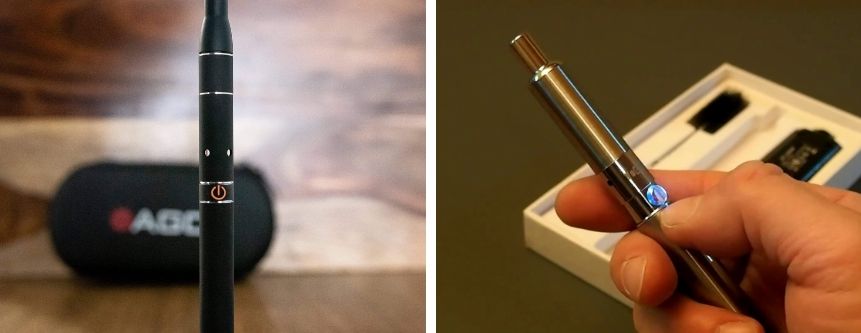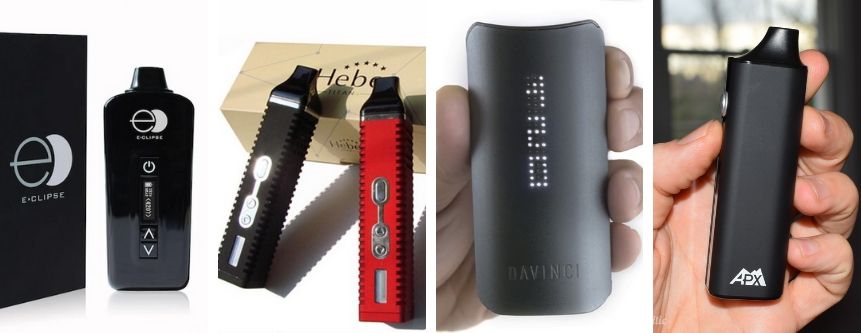Do Dry Herb Vaporizers Produce Smoke
Most dry herb vaporizers gently heat herbs and produce vapors. However,some dry herb vaporizers called combustion vapes burn the herbs and produce smoke. Learn about it all here.
Most Do Not, but Some Do
While there exist the typical type of dry herb vape (convection vapes) on the market that is specifically designed to vaporize your herbs without actually burning them, there are also others dry herb vapes (combustion vapes) that heat up your herbs similar to smoking, just no flame, and they produce smoke versus vapors. The difference between the two types of dry herb vapes, is that convection vapes utilize hot air within a chamber to pass through the herbs, gradually heating them, thus producing the vapors, whereas combustion vapes ignite the herbs on contact like a flame would and smoke is created – most combustion vapes heat the herbs with an exposed, red-hot heating coil.

These are both considered vaporizers because while one utilizes convection which is what most people are familiar with, and the other combusts the herbs at such a hot temperature rate that the smoke is produced versus vapors. Some say putting a torch to your herbs completely destroys most of the flavonoids while consuming the majority of your material in just a few short puffs, while combustion vapes take their time in order to maximize the most out of your dry herb material. Convection vapes are the most popular out of the two however and most are not intended to ignite your herbs in the vape tank at all.

Dry Herb Vaporizers that Produce Smoke
Combustion vapes such as the AGO Vape or the Yocan Evolve D are designed to produce smoke by slowly heating up your material to the proper combustion temperature. Unlike convection vapes that produce hot air for strict vaporization, combustion vapes are still considered vaporizers for their intended purposes of heating up your material to the lowest possible combustion temperature.
This exists because people still favor the smoke method that is produced by conventional means, though the healthier alternative is to do so at much lower temperatures. Smoke is thicker, which is not only felt in the lungs, but also produced visually as a big white puffy cloud, whereas vapor is usually transparent, light, and wispy. Both are effective means of utilizing your dry herb material, though smoking is by far the way to go if you are looking to transition slowly from smoke to vapor using lower temperatures

Dry Herb Vaporizers that DO NOT Produce Smoke
Convection vapes, whether portable or desktop models, utilize hot air that passes through the dry herb material to create the vapor without igniting the material. Some of these vapes include world renowned models such as the E-CLIPSE, most DaVinci vapes, the Titan 2, and most Pulsar models. While convection remains the gold standard for hot air vaporization which thoroughly heats your dry herbs, there are also conduction vapes on the market which in all honesty, are not as efficient. These utilize the chamber holding the herbs without the use of hot air.
While this remains a viable way to vaporize dry herbs, it is far from the only way to enjoy dry herbs. Also with convection vapes, you are inhaling air from the outside to increase airflow and allow the vapors to travel easily from the chamber through the mouthpiece. Also, be sure to always use a herb grinder in preparation.This helps make convection vapes much more reliable and efficient as vaporizers when the element of air is introduced.

Differences Between Smoke and Vapor
- Smoke tends to linger in the air much longer than vapors do, which only tend to act as a light scent in the air which dissipates only after a short while. This makes vaping much more ideal for those living in enclosed spaces or for public use.
- Vaping by comparison is a much healthier alternative to smoking, even despite the lower temperatures used by combustion vapes. These make the transition much easier however when it comes to switching from tobacco to other herbal alternatives.
- Vaping is undoubtedly a more discrete method of herbal consumption, as the vapor produced is not as noticeable the way smoke is in terms of odor and visual exhalation. This makes vaping much more ideal for those who are traveling or who want more privacy for their sessions.
- When vaping, one tends to get the most out of his or her dry herb material, since smoking destroys all of the herbs in a matter of just a few hits. Vaping slowly extracts all the essentials from your material until there is nothing left, which tends to last much longer than traditional smoking.
Related Blog Posts
Does the Titan 2 Vaporizer Produce Smoke or Vapor?
Blog Categories
- Home
- Industry News
- Vaporizer Reviews
- Dry Herb Vape Tutorials & FAQ
- Wax Pen Vape Tutorials & FAQ
- Oil Vape Pen Tutorials & FAQ
- Vaping Guides & Information
- Dabbing FAQ & Guides
- Smoking Pipe Tutorials
- NY Vape Shop Listicles
- Vape Pen Comparisons
- Vape Shop How To Articles
- Vape Shop Buyers Guide
- Vape Pen Basics
- Herb Grinder Reviews
- Dry Herb Vaporizer Reviews
- Oil Vape Pen Reviews
- Wax Pen Reviews
- Box Mod Vape Reviews